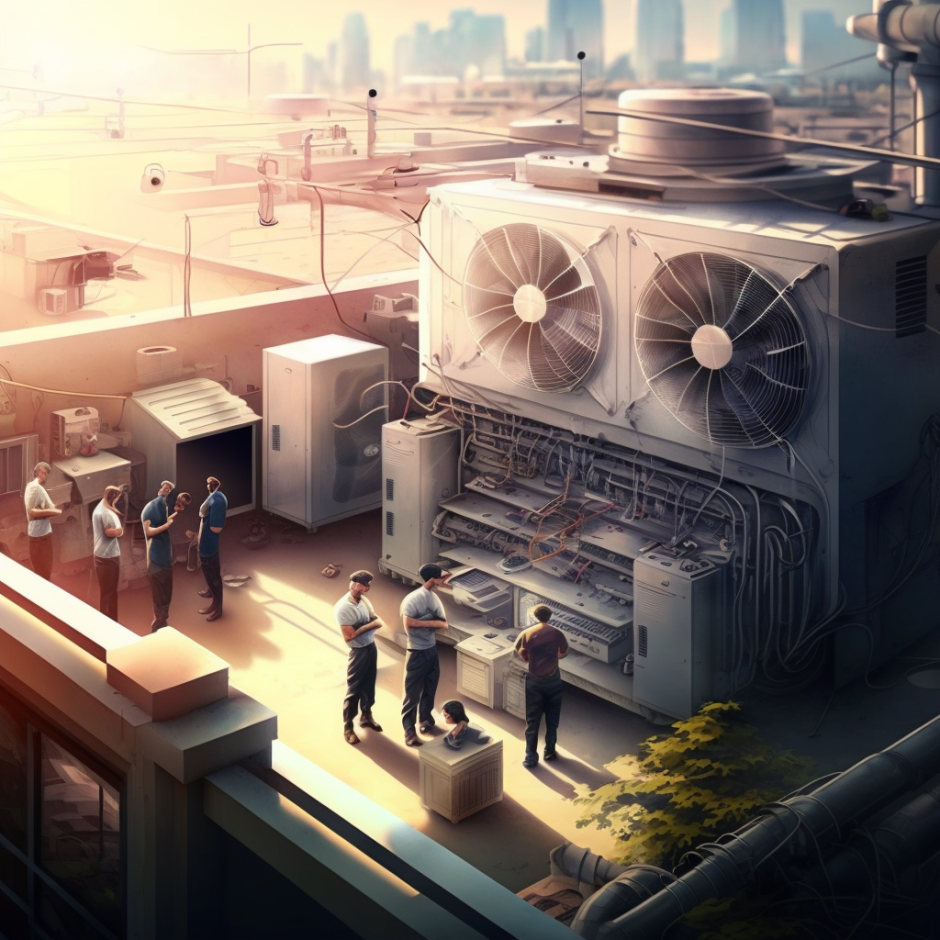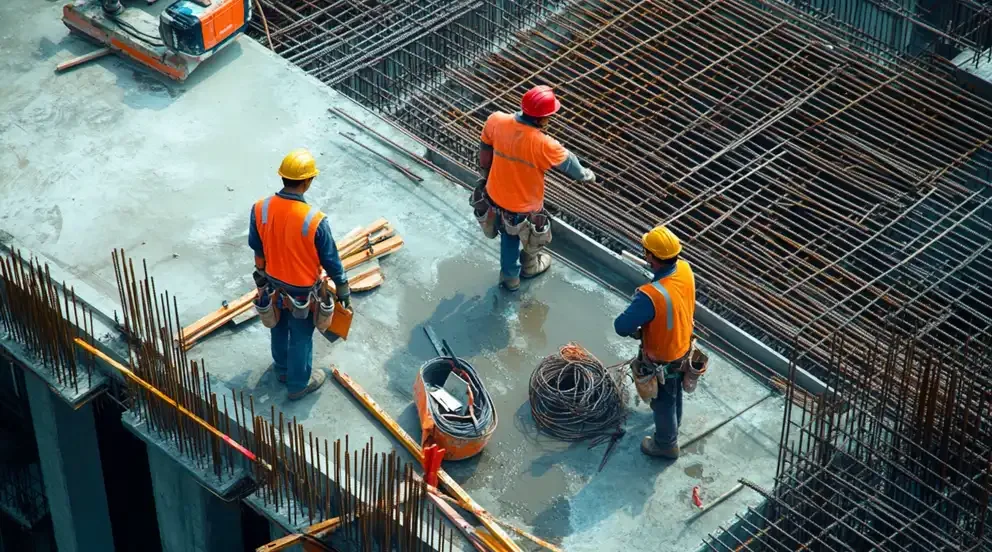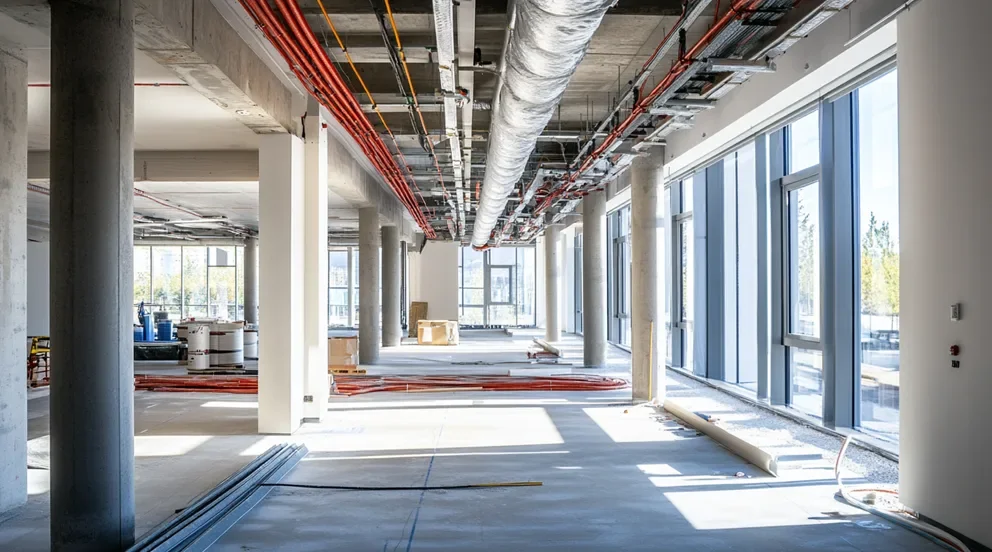What is HVAC Service?
HVAC service refers to the maintenance and repair of heating, ventilation, and air conditioning systems in residential and commercial buildings. This includes a wide range of tasks that are designed to keep HVAC systems functioning efficiently and effectively over time.
HVAC service may include:
– Routine maintenance: Regular maintenance is essential for keeping HVAC systems running smoothly. HVAC service technicians may perform tasks such as cleaning of filters, inspecting electrical components and fluid levels, checking for leaks, and testing system performance to ensure that the system is working properly.
– Emergency repairs: When HVAC systems break down unexpectedly or malfunction, HVAC service technicians are available to provide emergency repairs. This may involve replacing failed components, repairing damaged parts, inspecting systems to identify the root cause of the issue, and restoring proper system functioning.
– Upgrades and replacements: Over time, HVAC systems may become outdated or less efficient. HVAC service technicians may recommend upgrades or replacements to improve system performance or energy efficiency, such as replacing outdated thermostats, upgrading insulation, or installing new ductwork.
– Indoor Air Quality (IAQ) improvements: HVAC service technicians may also provide services such as air duct cleaning, installation of air purifiers, or upgrades to air filters to improve indoor air quality and reduce the risk of respiratory problems and allergies.
– HVAC service providers may offer a wide range of services depending on their expertise, the type of HVAC systems in question, and the needs of their customers.
What types of HVAC systems can be serviced?
There are several types of HVAC (heating, ventilation, and air conditioning) systems that HVAC service technicians can service. Here are a few examples:
– Split systems: Split HVAC systems consist of both indoor and outdoor units that are connected by refrigerant tubing. These systems are commonly used in residential and small commercial buildings.
– Packaged systems: Packaged HVAC systems have all of their components, including the heating and cooling units, contained in a single outdoor unit. These systems are commonly used in larger commercial buildings.
– Ductless mini-split systems: Ductless mini-split systems use individual indoor units connected to an outdoor unit to provide heating and cooling. These systems are common in older buildings where ductwork installation is difficult or impossible.
– Central air conditioning systems: Central air conditioning (AC) systems use refrigerant tubing and air ducts to cool indoor spaces. These systems are commonly used in larger residential and commercial buildings.
– Heat pumps: Heat pumps use refrigerant to transfer heat from one area to another, either for heating or cooling. They are commonly used in regions with moderate climates.
– Geothermal systems: Geothermal HVAC systems use underground pipes filled with water to transfer heat to and from the ground to regulate indoor temperature. These systems are highly energy-efficient but are less common due to their higher upfront cost.
– Different HVAC systems may require different types of servicing and repair, so it is important to hire a qualified HVAC service technician who is experienced with the particular type of system in question.
What are the top trends surrounding commercial HVAC service businesses today?
There are several trends in the commercial HVAC service industry that are shaping the way businesses operate and serve their customers. Here are some of the top trends:
– Preventive maintenance: Many commercial HVAC service businesses are moving toward a preventive maintenance model, where they focus on regular inspection, cleaning, and maintenance of HVAC systems to prevent problems from occurring in the first place. This can increase the lifespan of equipment, improve system efficiency, and reduce unexpected repair costs.
– Smart technology: The rise of “smart buildings” is influencing the way the commercial HVAC service industry operates. Smart technology can be used to monitor and control HVAC systems remotely, providing real-time data analysis and making it easier to identify potential problems before they become major issues.
– Energy efficiency: Businesses are increasingly looking for ways to reduce their energy usage and carbon footprint. HVAC service providers can help achieve these goals by upgrading older systems, installing more energy-efficient equipment, and recommending other energy-saving measures like insulation and air-sealing.
– Indoor air quality: The COVID-19 pandemic has raised awareness of the importance of indoor air quality in commercial buildings. HVAC service providers are responding by offering indoor air quality assessments and recommendations for air filtration and purification systems that can help reduce the spread of airborne viruses and bacteria.
– Technician training and development: As technology advances and HVAC systems become more complex, it is increasingly important for HVAC service providers to invest in ongoing training and development for their technicians. This allows them to stay up-to-date on the latest trends and technologies and provide the highest level of service to their clients.
What are the areas where commercial HVAC service businesses gain the most revenue today?
The revenue streams of commercial HVAC service businesses depend on the specific services they offer and the industries they serve. However, here are a few areas where these businesses commonly generate revenue:
– Preventive maintenance: Many commercial HVAC service businesses offer preventive maintenance services to help ensure that HVAC systems are running efficiently, which can reduce repair costs and extend equipment lifespan. This can be a major source of recurring revenue for businesses that service a large number of clients.
– Emergency repair services: When HVAC systems break down or malfunction unexpectedly, commercial HVAC service businesses are often called upon to provide emergency repair services. These services can be billed at a premium rate, making this a valuable source of revenue.
– Retrofitting older systems: Older buildings may require retrofits or upgrades to their HVAC systems to improve energy efficiency or comply with new regulations. HVAC service businesses can generate revenue by retrofitting older systems to improve their performance or installing new systems altogether.
– Indoor air quality improvements: With the recent focus on indoor air quality in commercial buildings, many HVAC service businesses now offer indoor air quality assessments and solutions to their clients. This can include services like air duct cleaning, installation of air purifiers or ultraviolet germicidal irradiation systems.
– Energy efficiency consulting: Many businesses are focused on reducing their energy consumption and carbon footprint, so commercial HVAC service businesses that offer energy efficiency consulting services can generate revenue by recommending upgrades and updates designed to improve energy efficiency and reduce costs over time.
– Smart technology: Businesses are increasingly interested in automating and streamlining building operations through smart technology. This includes HVAC systems. Commercial HVAC service businesses that specialize in installing and maintaining smart HVAC systems can generate revenue by offering these services to their clients.
– These are just a few examples of the areas where commercial HVAC service businesses generate revenue. Different businesses may specialize in different areas depending on their expertise and the needs of their clients.
What are the areas where commercial HVAC service businesses lose the most revenue today?
Commercial HVAC service businesses can experience financial losses when they face operational issues, customer complaints, or unexpected expenses. Here are a few areas where commercial HVAC service businesses might lose the most revenue:
– High labor costs: Labor costs are typically the largest expense for HVAC service businesses. Inefficiencies in scheduling, dispatching, or supplying technicians with parts can drive up labor costs and reduce profits.
– Competition: Competition in the HVAC service industry is high. If a business is struggling to differentiate itself or is losing customers to competitors, it can lead to lower revenue and profitability.
– Inaccurate cost estimates: HVAC service businesses may provide cost estimates to customers for repair or maintenance services. If these estimates prove inaccurate or services take longer than anticipated, businesses may be forced to absorb the additional costs or lose the customers’ trust.
– Equipment failures: HVAC systems can fail without warning. When service businesses face large or unexpected repair bills for equipment that fails during or after a repair, it can negatively impact their financial performance.
– Legal issues: Contract disputes or litigation can cost HVAC service businesses significant amounts of money in legal fees, settlements, and court costs.
– Consumer sentiment: Poor reviews, low customer satisfaction, or negative word-of-mouth advertising can harm an HVAC service business’s reputation, which in turn can harm revenue growth by reducing customer referrals.
– It’s essential for commercial HVAC service businesses to be proactive in identifying and mitigating these financial risks. This involves continually improving business processes, monitoring costs, and identifying opportunities for revenue growth.



